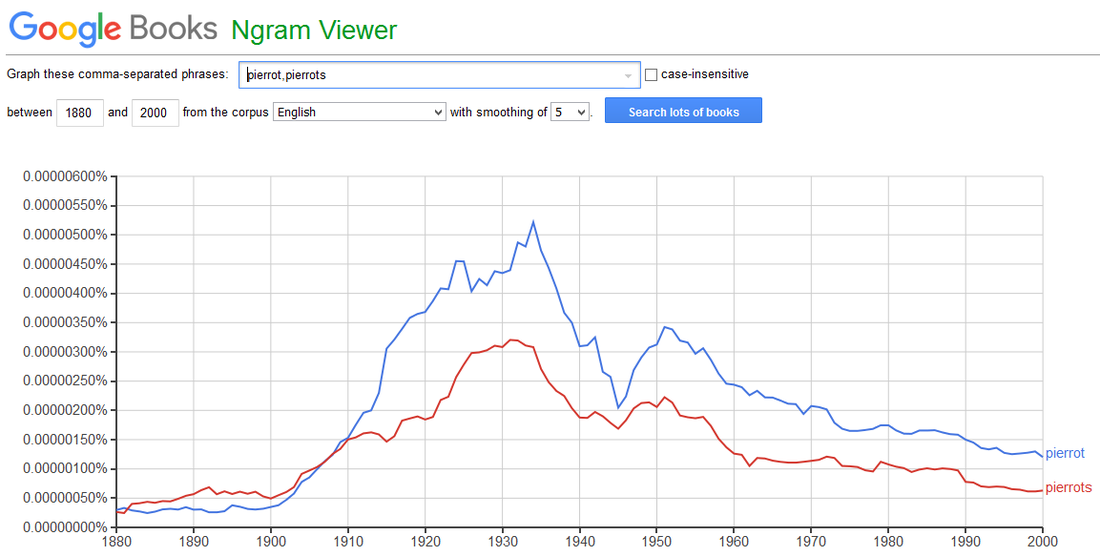The Saturday Review magazine’s January 28th, 1928 issue has the following advertisement (p.559):
(1) Who is Aubrey Beardsley?
(2) What is a “pierrot”? What is a “harlequin”?
(3) What is meant, exactly, by “clown”? Is this actually a biography of a circus clown?
(4) What is meant by “Oscar Wilde’s downfall”? Again, was a circus clown actually involved in it? This seems unlikely.
(5) Who has ever heard of the names “Aubrey” (for a boy) or “Haldane”? How might you pronounce “Haldane”?
(6) Was $6.00 expensive for a book in 1928?
This word “pierrot”. I recognized it to be — this is true — a Korean word. I had struggled remembering the Korean word 피에로. The Korean-English dictionary said the word translates in English as “pierrot; clown.” I’d never heard of an English word “pierrot.” It seems French. How did Korean get a French loanword for “clown”? Does the word really exist in English? If so, why had I never heard it before? Seeing it in English for the first time, in a periodical published six decades before my birth was a pleasant surprise…
Use of “pierrot” had declined quite a lot by the time I started reading in the 1990s. It was up to five times more common in published texts in the 1920s-1930s than it was by the 1990s-2000s. In fact, by year 2000 the red line (“pierrots”) sits back where it was before the word started its rise in the 1900-1905 period. I interpret this to mean that we have “completely lost the word” and so it has returned to just being “a foreign word,” not a “loan word” any more. (It was deloaned?) (I am vindicated in this thought by the fact that the automatic spellchecker included in the Firefox browser on which I am writing warns me that “pierrot” is a misspelled word.)
Thinking about the rise and fall of the word “pierrot”: The amount of language change that must have occurred in history that has simply vanished without a trace must be enormous. Maybe much, much greater than that which survived, than that which forms part of the languages as they exist today. There is probably no way to track down the great majority of vanished words or perhaps other aspects of language because most of history was pre-literate. Given a non-literate culture, especially, “pierrot” is a case of a word that would simply vanish.
Who was Aubrey Beardsley? He was an English cartoonist (1872-1897). Some of his drawings were quite shocking. His art is the kind that would’ve been considered decadent or pornographic at the time and subject to bans, but today might appear in museums.
Who was the biographer, Haldane MacFall? He was another English artist and writer (1860-1928; he died the very year this book was advertised at age 68). His full name was Chambers Haldane Cooke Macfall. The link over his name is to a little biography of the man someone has done. The Aubrey Beardsley book is mentioned in the rundown of his published works: “[MacFall also wrote]…a spirited defence of his friend Aubrey Beardsley (1928.)”
The Aubrey Beardsley book was sold for $6.00 in 1928. This equals $83.45 in 2015 dollars. That’s a whole lot of money for a book.


